If you missed it, Dan Savage had a great chat last week with Stephen Colbert. They chatted a bit about (something we’ve been writing about a lot in the recent Craig scandal) the difference between gay and straight.
It follows after an introduction…
If you missed it, Dan Savage had a great chat last week with Stephen Colbert. They chatted a bit about (something we’ve been writing about a lot in the recent Craig scandal) the difference between gay and straight.
It follows after an introduction…
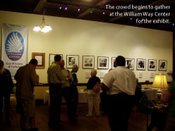 A great crowd of Philadelphians gathered last night at the William Way Center for the unveiling of Mark Thompson’s exhibition of portraits "Fellow Travelers." The remarkable photographs of Gay cultural pioneers were part of the Gay center’s first Gay History month celebrations.
A great crowd of Philadelphians gathered last night at the William Way Center for the unveiling of Mark Thompson’s exhibition of portraits "Fellow Travelers." The remarkable photographs of Gay cultural pioneers were part of the Gay center’s first Gay History month celebrations.
Adding to the excitement of the evening was the presence of Gay pioneers like Daughters of Bilitis member (and partner to Barbara Gittings) Kay Tobin Lahusen. Also present to show his collection of early Philadelphia Gay publishing material was Mark Segal of the Philadelphia Gay News. Also present was famed Gay songwriter and cabaret performer Tom Wilson Weinberg.
Many thanks to Dolph Ward Goldenburg, Executive Director of the William Way Center for his efforts in making the exhibition and the evening possible.
The exhibit will be there through the end of October so if you get a chance to visit, do!
Here are a few photographs from the wonderful evening.
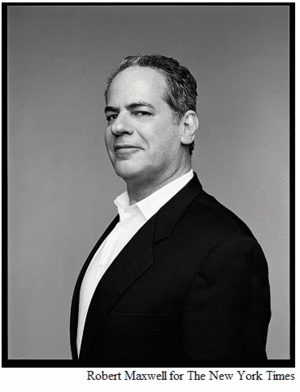 Herbert Muschamp, best known as the architecture critic for the New York Times, died late Tuesday night after a fierce and unpleasant battle with cancer. He was 59
Herbert Muschamp, best known as the architecture critic for the New York Times, died late Tuesday night after a fierce and unpleasant battle with cancer. He was 59
“We were the children of white flight, the first generation to grow up in postwar American suburbs. By the time the ’60s rolled around, many of us, the gay ones especially, were eager to make a U-turn and fly back the other way. Whether or not the city was obsolete, we couldn’t imagine our personal futures in any other form. The street and the skyline signified to us what the lawn and the highway signified to our parents: a place to breathe free.” Herbert Muschamp
"A city is never more fully human than when expertise — our own or someone else’s — allows us access to ebullience, lightness and delight." Muschamp’s review of Santiago Calatrava’s design for a building at 80 South Street, written in 2004
Philadelphia born, Muschamp studied art at the University of Pennsylvania before dropping out to move to New York. He was enmeshed in the burgeoning arts scene and, according to Elaine Woo’s obit in the LA Times, was a regular fixture around Andy Warhol’s "the Factory." Muschamp went back to school, studying architecture at Parsons where he eventually taught. He wrote for Vogue, Art Forum, the New Republic and of course The New York Times where he was architecture critic starting in the early 1980s.
His writing ranged across many fields. His first book File under Architecture, is a, sadly out of print, classic. He wrote Hearts of the City, and the introduction to Robert Mapplethorpe’s The Complete Flowers. In his Man About Town : Frank Lloyd Wright in New York City, Muschamp deflated Wright’s "city hating" posturing as a conceit and looked critically (and at times favorably) at Wright’s urban projects — like Broadacres and Million person skyscraper. It makes for great writing. In an essay on the Viennese architect Adolf Loos in Visions of Utopia, Muschamp wrote a great working philosophy for one’s individual work:
"…utopianism, for me, has come to represent the concept of taking local, idealistic actions in an imperfect universe. I can’t think about this subject in any other way. The conventional utopia–the imaginary ideal city or world — seems to me a transitional state between belief in an almighty dignity, a supreme being capable of bending the laws of nature, and the acceptance of personal responsibility in whatever sphere life happens to place us." Herbert Muschamp "Service Not Included" Visions of Utopia
I loved his writing. It was incisive, funny, and educational. I appreciated his passion (a word that keeps coming up in all the obits about him). You could tell that architecture and the way that people live in the city mattered. 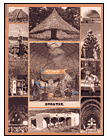 A few years ago I came across a great piece of Muschamp’s 1970s-era criticism in an old volume of Lloyd Kahn’s Shelter book (recently reprinted). The book, sort of a relic of hippie DIY building (it was recently reissued), was a wonder. But I was amazed to see Muschamp in its pages. I remember doing a sort of double take. Of course this was years before his New York Times days, but as I read the piece, titled "Medieval NYC" I realized Muschamp was a perfect fit for this book about building authentically. I found it just as fitting and fresh for the current era. I always found his work to be about a deep humanism and a desire for authenticity. He championed then largely unknown architects like Frank Gehry.
A few years ago I came across a great piece of Muschamp’s 1970s-era criticism in an old volume of Lloyd Kahn’s Shelter book (recently reprinted). The book, sort of a relic of hippie DIY building (it was recently reissued), was a wonder. But I was amazed to see Muschamp in its pages. I remember doing a sort of double take. Of course this was years before his New York Times days, but as I read the piece, titled "Medieval NYC" I realized Muschamp was a perfect fit for this book about building authentically. I found it just as fitting and fresh for the current era. I always found his work to be about a deep humanism and a desire for authenticity. He championed then largely unknown architects like Frank Gehry.
The obituary in the Los Angeles Times quotes Muschamp’s once writing about his agenda:
"If I have an agenda," he wrote, "it is to peek beneath the mantles of authority with which architecture needlessly cloaks itself, and reveal the fishtails and horses’ behinds."
Shouldn’t this be the agenda of every curious living person?
This was published on my blog Wondermachine.
Jesse’s Journal by Jesse Monteagudo
Children of the Black Cat
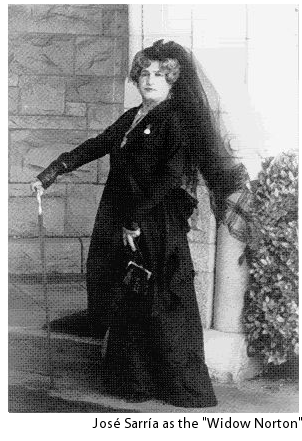 One of the highlights of the 1984 documentary film "Before Stonewall" was a filmed reunion of the staff members and patrons of the Black Cat Café, a "bohemian" bar that flourished on Montgomery Street in San Francisco. Today the Black Cat, which finally closed in 1963 after 30 years of service, is best-remembered as the place where drag entertainer José Sarría became famous. Sarría, who was an activist as well as a performer — in 1961 he was the first openly Gay person to run for the San Francisco Board of Supervisors — often spiced his routines with gay rights messages and always ended his shows by leading his audiences in vivid renditions of "God Save Us Nelly Queens." At the reunion, Sarría and other Black Cat veterans reminisced about how the Café served them as a home away from home, a support group, and a family of choice. Whether they be women or men; blacks, whites or Latinos; middle-class or working-class, the Black Cat brought them together and made them a community
One of the highlights of the 1984 documentary film "Before Stonewall" was a filmed reunion of the staff members and patrons of the Black Cat Café, a "bohemian" bar that flourished on Montgomery Street in San Francisco. Today the Black Cat, which finally closed in 1963 after 30 years of service, is best-remembered as the place where drag entertainer José Sarría became famous. Sarría, who was an activist as well as a performer — in 1961 he was the first openly Gay person to run for the San Francisco Board of Supervisors — often spiced his routines with gay rights messages and always ended his shows by leading his audiences in vivid renditions of "God Save Us Nelly Queens." At the reunion, Sarría and other Black Cat veterans reminisced about how the Café served them as a home away from home, a support group, and a family of choice. Whether they be women or men; blacks, whites or Latinos; middle-class or working-class, the Black Cat brought them together and made them a community
Though the Black Cat was the best known LesBiGay bar of the 1950’s, it was by no means the only one of its kind. At a time when community groups were few and far between, bars often served as community centers. "For Gay men and Lesbians, the centrality of bars to community life has probably been truer than it has for any other group," wrote Matthew D. Johnson and Claude J. Summers in glbtq.com.
"In addition to providing opportunities for glbtq people to socialize and to meet potential partners, Gay and Lesbian bars have offered members of a stigmatized social minority, often isolated from one another, an opportunity to inhabit space with like-minded folk. Until recently, they were often the only venues in which glbtq people could feel free to be openly gay."
There is hardly a Gay memoirist of the 1940’s or 1950’s who does not recall a favored Gay watering hall, as did the late Ricardo J. Brown in his book The Evening Crowd at Kirmser’s; a gay bar in 40’s St. Paul, Minnesota. Brown’s fond memories are echoed by those of other lesbian and gay members of "the greatest generation."
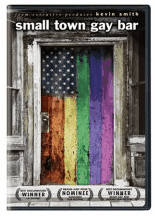 Even today, Lesbian and Gay bars play an important role in the lives of many Lesbian, Gay, bisexual and transgender people. This is especially true in small towns and rural areas that lack community centers and other supportive groups. In the recent film documentary Small Town Gay Bar, Gay bars play an important role in the lives of GLBT people who live in rural Mississippi. To the people who frequented Rumors in Shannon and Crossroads in Meridian, bars were more than just places to drink, dance or cruise. They were havens for persecuted minorities and unique opportunities to be open and honest within an oppressive social climate. The brutal hate crime death of Scotty Weaver, an event that was also featured in Small Town Gay Bar, only reminds us of the dangers of being a queer person within the buckle of the Bible belt.
Even today, Lesbian and Gay bars play an important role in the lives of many Lesbian, Gay, bisexual and transgender people. This is especially true in small towns and rural areas that lack community centers and other supportive groups. In the recent film documentary Small Town Gay Bar, Gay bars play an important role in the lives of GLBT people who live in rural Mississippi. To the people who frequented Rumors in Shannon and Crossroads in Meridian, bars were more than just places to drink, dance or cruise. They were havens for persecuted minorities and unique opportunities to be open and honest within an oppressive social climate. The brutal hate crime death of Scotty Weaver, an event that was also featured in Small Town Gay Bar, only reminds us of the dangers of being a queer person within the buckle of the Bible belt.
Much has been written recently about the decline of GLBT bars, most notably in an excellent, in-depth column by journalist Paul Varnell. But we must never underestimate the impact taverns have in our communities. We don’t have to go to rural Mississippi to find a bar where, like TV’s Cheers, everyone knows your name. To many of us, a beloved neighborhood bar is a second home and the people who work or play there form the family that we never had. Because of this, the closing of a Suncoast Resort in St. Petersburg or a Full Moon Saloon in Orlando (to name two Florida attractions) is rarely pure and never simple. To many of us, it is as if a loved one has passed away.
Of course bars are businesses first and foremost, not community centers or social services. Even the original owners of Rumors and Crossroads had to sell when their bars were no longer profitable, no matter what their customers needed or wanted. Home Depot gave the owners of the Suncoast Resort an offer that they could not refuse; while the owner of the Full Moon Saloon simply burned out. When push came to shove, the needs and desires of the patrons, the employees and the community at large did not matter one bit.
On the other hand, we should not be too critical of the bar owners who, like you and me, are only trying to make it in a cruel world. For every bar owner who looked out for number one there were many proprietors – like the owners of the Black Cat – who risked all to serve their community. There are countless GLBT and AIDS charities that survive thanks to the generosities of gay bars, their owners, staff and patrons. In spite of it all, for every bar that closes, another one often comes along to take its place. Even in rural Mississippi, Rumors now flourishes under its new owners while Crossroads enjoys a new life as Different Seasons. There is still a need in our community for places where we can relax and be ourselves; and this is a service that our bars do so well. Fifty years after the heyday of the Black Cat Cafe, it’s children continue to do what they do well, and we are much better for it.
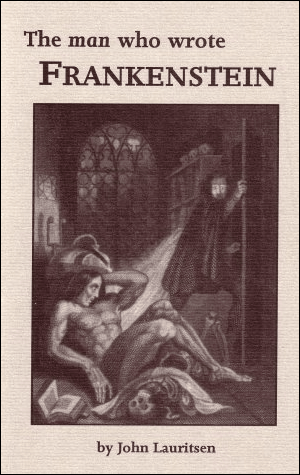 Jesse’s Journal by Jesse Monteagudo
Jesse’s Journal by Jesse Monteagudo
Lauritsen’s
Frankenstein
We first heard of gay activist scholar John Lauritsen in 1974, when he wrote (with David Thorstad) The Early Homosexual Rights Movement (1864-1935).
In 1982, Lauritsen founded Pagan Press to "publish books of interest to the intelligent gay man." To that intent Lauritsen published classic works by John Addington Symonds and Edward Carpenter as well as his own thought-provoking essays. More controversially, Lauritsen is an "AIDS dissident" who does not believe that HIV is the cause of AIDS. Lauritsen’s writings on AIDS appear in The AIDS War (1993) and in the anthology The AIDS Cult (1997), which he co-edited with Ian Young.
Lauritsen calls himself "an independent scholar" who has "the freedom to tell the truth as I see it, without concerns for career or ‘collegiality.’" Lauritsen’s willingness to challenge conventional wisdom is evident in his most recent book, The Man Who Wrote Frankenstein (Pagan Press; $16.95). In this book, Lauritsen takes on one of English literature’s most famous works: Frankenstein; or The Modern Prometheus. Lauritsen’s Frankenstein has three theses, all controversial: "[1] Frankenstein is a great work which has consistently been underrated and misinterpreted. [2] The real author of Frankenstein is Percy Bysshe Shelley, not his second wife, the former Mary Godwin. [3] Male love is the dominant theme of Frankenstein " Let’s look at each of the 3 theses.
"[1] Frankenstein is a great work which has consistently been underrated and misinterpreted." Certainly Frankenstein has a bad reputation, the product of a century of bad movie versions. Most critics, Lauritsen writes, "have failed to appreciate the excellence of its prose, the power of its symbolism, and the profundity of its ideas." Above all, Frankenstein is "a moral allegory about the evil effects of intolerance and prejudice, ostracism and alienation, both to the victims of intolerance and to society at large." Among these "victims of intolerance" are gay men; and Lauritsen contends that, "at least on one level, Shelley wrote Frankenstein for a select audience, gay men; his novel deals with their oppression and with the crimes and monstrosities which flow from that oppression." It should be noted that Lauritsen prefers the original 1818 edition of Frankenstein over the 1831 revision by Mary Shelley. "Without exception, every ‘revision’ was for the worse. Whenever hostile to Shelley’s radical ideas – on science, love, or religion – she expurgated them."
"[2] The real author of Frankenstein is Percy Bysshe Shelley, not his second wife, the former Mary Godwin." As noted in the previous paragraph, Lauritsen has no love for Mary Wollstonecraft Shelley, who most people believe was the author of Frankenstein. Lauritsen even denies that Mary Shelley took part in the famous "ghost writing contest" (1816) that led to the writing of this book. "If there really was a contest, the participants must have been [Lord George] Byron, Shelley, and [Dr. John] Polidori – three brilliant, well educated young men, who were already accomplished writers. In contrast, Mary Godwin (a the time, merely Shelley’s mistress) was far from brilliant, had virtually no schooling of any kind, and had never written anything of consequence." The way Lauritsen saw it, Mary Shelley "had a commonplace mind, almost no formal education, and little talent for writing. . . . Nowhere in Mary’s writing is there a single passage of the quality found in almost every paragraph of the 1818 Frankenstein." [This is true.] On the other hand, Lauritsen writes, "In ideas and style, Frankenstein is a man’s work and consistently Shelley’s creation." "Frankenstein is [Percy] Shelley’s work, and his alone – his ideas, his life, his language. . . . Read the 1818 Frankenstein, read the works of Shelley, and you will recognize the author of Frankenstein."
"[3] Male love is the dominant theme of Frankenstein " In spite of his two wives, Percy Shelley was interested in "Greek love," as seen in his translation of Plato’s Symposium – recently published by Pagan Press – and in his strong (though possibly platonic) friendships with other men. If Percy Shelley did write Frankenstein, it is not surprising that "passionate friendships" between men is a major theme. Lauritsen lists three "passionate" couples: [1] Dr. Victor Frankenstein and Captain Thomas Walton, who rescues the wandering doctor; [2] Frankenstein and his schoolmate, Henry Clerval; and [3] Frankenstein’s father and a man named Beaufort. Even Frankenstein’s monstrous creation was meant to be, according to Lauritsen, "not only a companion, but a big, beautiful and obedient sex partner." On the other hand, "when Victor Frankenstein flees his workroom after viewing the creature . . ., and when he runs out of the house after the monster tries to get in bed with him, he seems to be exhibiting ‘homosexual panic’ – hysteria resulting from a clash between intense homoerotic desire and social condemnation." Lauritsen concludes that "Shelley wrote on two levels; he wanted general readers to regard Frankenstein and Clerval as loving friends, but his special readers, the sunetoi [a Greek term used by Shelley that Lauritsen suggests could be a "code word for ‘gay’"] to discern that they are also sexual partners. All things considered, it is understandable that Shelley chose to conceal his authorship of Frankenstein."
The Man Who Wrote Frankenstein suffers from Lauritsen’s constant complaints about "feminists," a convenient scapegoat in all of his books. But what do we make of the three theses? I believe [1] Is true. Just as too many people confuse Dr. Frankenstein with his monster, so do many people judge the novel by its mostly horrific (in both senses of the word) film versions. [2] could also be true, though there is no conclusive proof. As for [3], it hinges upon [2]: It is possible that Percy Shelley would write a book about male relationships and then, considering the times, deny having written it. On the other hand, if Frankenstein was indeed written by Mary Shelley, such a theme would not make sense. In any case, The Man Who Wrote Frankenstein is an important and thought-provoking book, whether or not you agree with it’s author’s premises.
Jesse Monteagudo is a freelance author who lives and writes in South Florida.
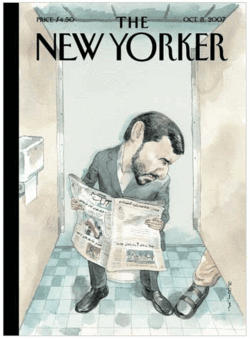 Bo gave me a heads up that the new New Yorker cover was a must-see.
Bo gave me a heads up that the new New Yorker cover was a must-see.
In a move of sheer brilliance it features a wonderful Barry Blitt illustration of the Iranian president Ahmadinejad in a bathroom stall with a sandle-clad foot tapping from the stall next door.
Just fantastic when an artist can combine three stories in one panel. Also fascinating to see how the Larry Craig narrative has become a mainstream touchstone. What a perfect way to blow a hole through Ahmadinejad’s preposterous statement that there are no homosexuals in Iran.
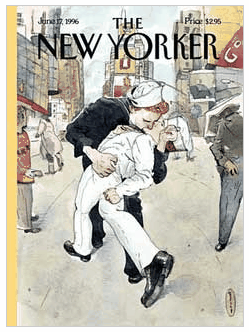 Barry Blitt is perhaps my favorite cover illustrator and as Bo’s bathroom can attest, he’s drawn a lot of the gay themed covers to the New Yorker. Bo has them framed on his wall there. I used to have Blitt’s great gay take on the famous Armistice kiss on my wall when I was living in Chicago. He’s a marvelous illustrator.
Barry Blitt is perhaps my favorite cover illustrator and as Bo’s bathroom can attest, he’s drawn a lot of the gay themed covers to the New Yorker. Bo has them framed on his wall there. I used to have Blitt’s great gay take on the famous Armistice kiss on my wall when I was living in Chicago. He’s a marvelous illustrator.
The New Yorker has all of his images for sale in different formats too on their online store.
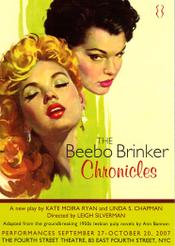 I don’t think there are books in the Gay men’s community that compare to Ann Bannon’s 50s and 60s Lesbian bodice rippers…Odd Girl Out…I Am A Woman…Women in the Shadows…and Journey to A Woman…but while the stories are women’s stories, there is a universal truth in them, about the coming out process in another time, when shame and shadows and anguish — what the Radical Religious Right would call "The Good Old Days — were the words that ruled Gay and Lesbian lives.
I don’t think there are books in the Gay men’s community that compare to Ann Bannon’s 50s and 60s Lesbian bodice rippers…Odd Girl Out…I Am A Woman…Women in the Shadows…and Journey to A Woman…but while the stories are women’s stories, there is a universal truth in them, about the coming out process in another time, when shame and shadows and anguish — what the Radical Religious Right would call "The Good Old Days — were the words that ruled Gay and Lesbian lives.
Bannon’s Odd Girl Out was the second biggest selling paperback of 1957…something she didn’t learn until 30 years later! The books were popular when they were first released, and have proved a remarkable longevity especially for pulp fiction, being reprinted in three different issues, and several languages. That iconic longevity, the characters and the books themselves earned her the title of "Queen of Lesbian Pulp Fiction." When depictions of Lesbians in written literature were quite rare, and what there was was dismal and unhappy, her books set her apart from other authors who wrote about Lesbianism. She has been described as "the premier fictional representation of US lesbian life in the fifties and sixties," and that her books, "rest on the bookshelf of nearly every even faintly literate Lesbian."
Last night we went to see the Hourglass Group’s production of Kate Moira Ryan and Linda Chapman’s The Beebo Brinker Chronicles, an adaptation of three of Bannon’s books. Ms. Bannon was in attendance, looking stunning, and receiving the adulation of her fans. All of us. It was marvelous. Can’t recommend this play highly enough. If your first thought is "I’m not a Lesbian, what would this have to say to me?" you couldn’t be more mistaken. The writers could have easily played this for camp, but they didn’t. It is poignant, witty, thoroughly entertaining, smart, funny theater. There’s a fine cook’s hand at play, with just a soupçon of camp…enough to make you laugh out loud, partly from the humor, partly from the buzz of recognition. The writers (and Bannon) are word perfect in capturing the early Lesbian and Gay "zeitgeist," all the lies we all bought into before we knew we were more than the only queer on the planet.
If Logo was programming like this, instead of the dreck like "Rick and Steve" I’d probably be watching Logo a helluva lot more. This material could…should…easily be translated into one hot television series…Desperate Lesbians!
If you are, as they say, "of a certain age," Lesbian or Gay, you will see yourself up on the stage ( there is a bravura performance by Obie winner, David Greenspan, the likes of which we haven’t see since Take Me Out…as well as the marvelous performance…and buff body…of Bill Dawes, the cuckolded husband Laura leaves.)
If you’re lucky enough to have been born "post Stonewall" you need to know these stories. This is your heritage. This is where Stonewall came from.
There is something incredibly important about the "particularity of voice"…which is why we continue to insist that White Crane remains for and by Gay men. Welcoming, as they say, but we only purport to speak for ourselves as Gay men. Last night was an opportunity to hear the Lesbian voice…and it was proud and clear and true. For all of us. Brava to everyone who had anything to do with this play. By the way….Beebo playwright, Linda Chapman and her partner, Obie-award winning actor, Lola Pashalinski, have a featured article inthe fall White Crane, Lovers.
A limited run…through October 20. Tickets available here.